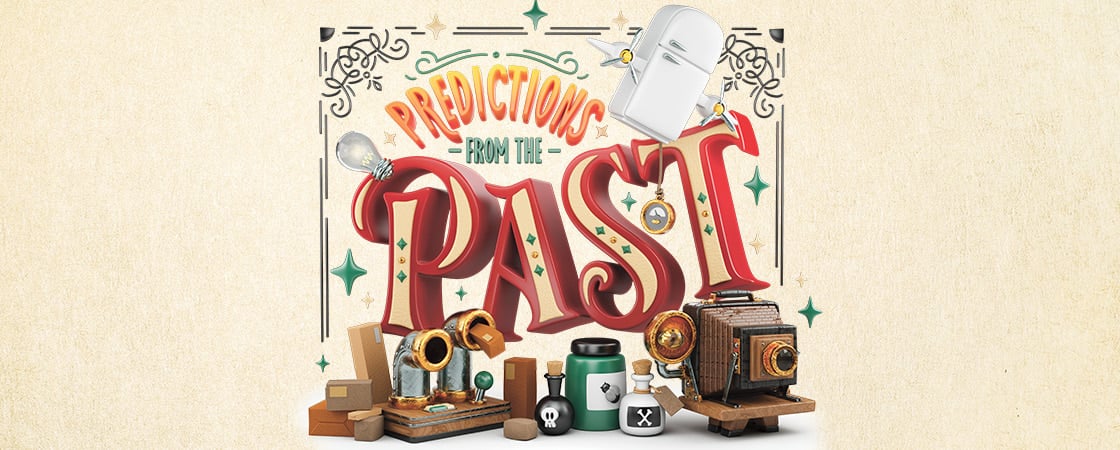Picture this: It’s the year 1900. Dazzling inventions are changing people’s lives. The telephone lets friends who live far apart talk to each other. Moving staircases called escalators bring people up and down buildings. And the first electric lights are glowing.
What changes will come next? Journalists interviewed experts to find out. In 1900, they printed articles with predictions of what the future might be like. As you read, ask yourself: Did these predictions come true?
Picture this: It’s the year 1900. New inventions are changing people’s lives. Friends who live far apart can talk to each other. They use the telephone. There are moving staircases called escalators. They bring people up and down buildings. And the first electric lights are shining.
What changes will come next? Journalists asked experts to find out. In 1900, they printed articles. The articles had predictions of what the future might be like. As you read, ask yourself: Did these predictions come true?

